20 Easy and Healthy Snack Ideas
17 minute read
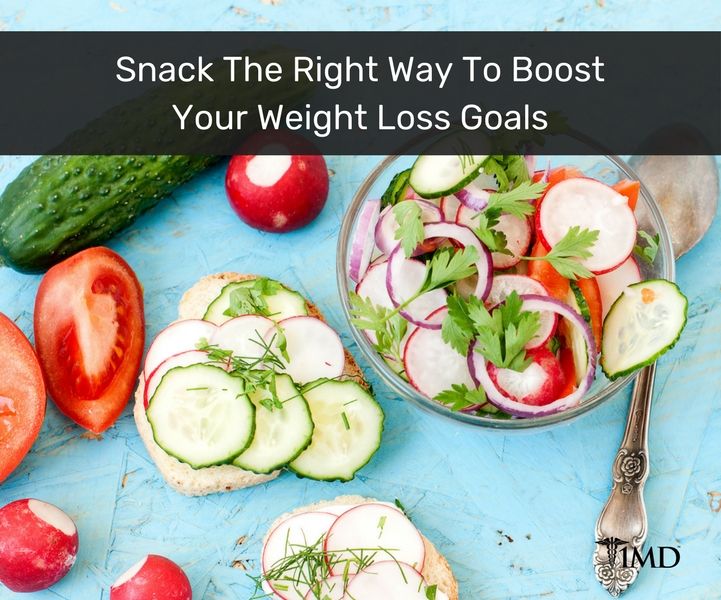
Remember when mom used to warn you snacks could ruin your appetite for dinner? Between meal snacks may actually encourage weight loss and boost your nutrients, depending on what types of snacks you choose and if you adjust your intake at meals.
Since the 1970s, the number of snacks eaten per day has doubled and the number of Americans reporting that they regularly include snack in their diets has increased from 59 to 90 percent. The percentage of American children and teens 12-19 who are obese has tripled between 1971 and 2011. One of every three Americans is categorized medically as overweight or obese.
| Related: The Pleasure Principle: Why We Love Sugar, Salt, and Fat |
However, snacking in and of itself does not seem to correlate with weight as much as the types of snacks consumed. One significant cause of the increase in weight is the consumption of calories from sugar and processed snack foods, as well as soft drinks.
Some studies show that snacking on the right foods may encourage people to include nutrients lacking in the diet. Include plenty of vegetables, fiber, and protein to ensure you’re including plenty of healthy foods each day.
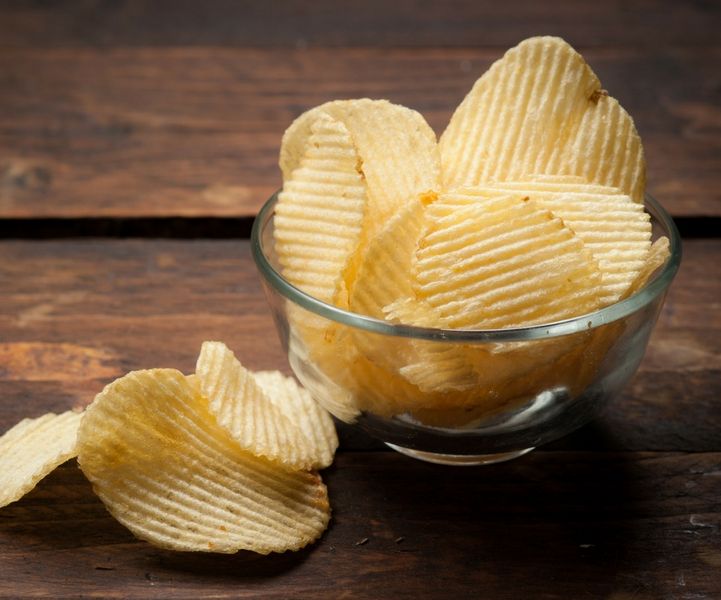
Snacks to Avoid
♦ Chips
♦ Low fiber crackers
♦ Granola or cereal bars
♦ Pretzels
♦ 100-calorie snack packs
♦ Refined carbohydrates and sugars
♦ Donuts
♦ Cookies
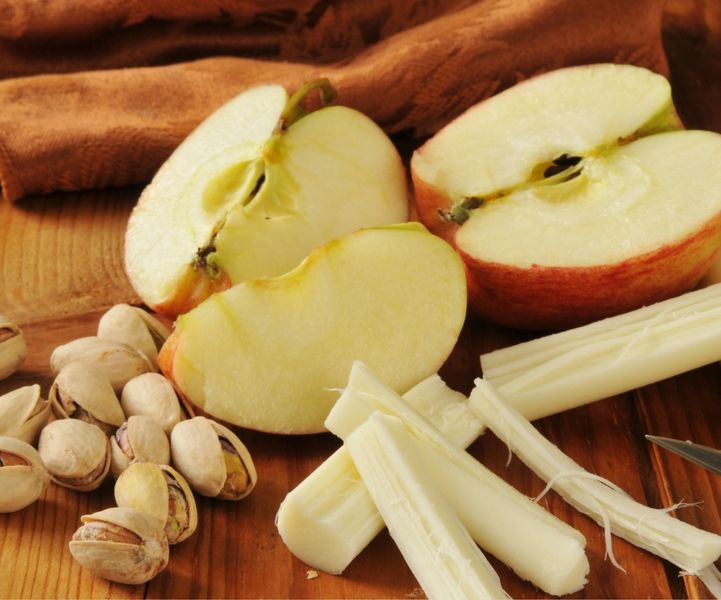
Snacks to Include
A healthy snack should include no more than 100-150 calories for women and 200 calories for men, as well as 15-20 grams of protein, as well as fiber.
This is especially important for people with Type 1 or Type 2 diabetes or insulin resistance. Avoid snack foods high in sugar or refined carbohydrates, which can boost blood glucose levels.
| Related: Mood-Boosting Baked Zucchini Fritters |
Snacks are a good way to add vegetables and fruits to your diet. It’s best to include snacks that include a variety of nutrient groups to boost your nutritional profile. For example, pair a fruit or vegetable with a protein.
Tips for Snacking
1. Balance your meals around snacks to avoid consuming too many calories.
2. Watch portion size.
3. Plan snacks ahead of time.
4. Practice mindful eating; don’t dip your hand into the bag of chips while watching TV.
5. Choose snacks that are high in protein, which has longer lasting impact on appetite than refined carbohydrates.
6. Combine more than one food group, such as apples and peanut butter to ensure a variety of nutrients.
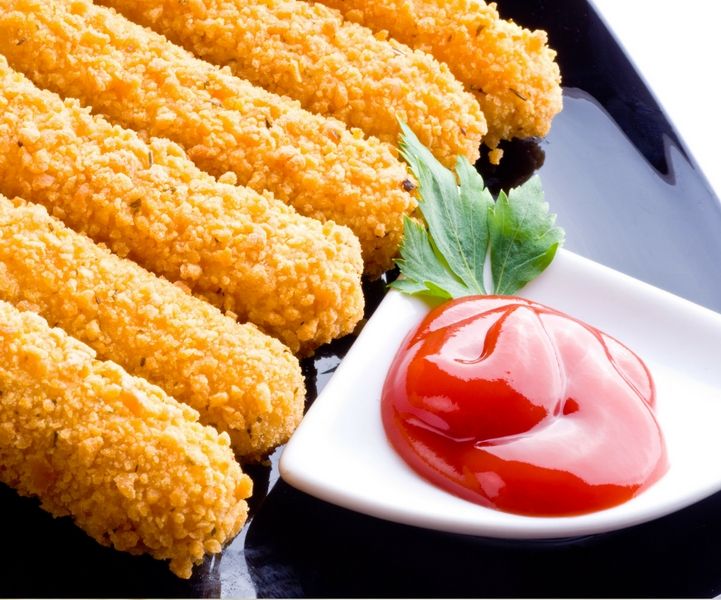
20 Easy & Healthy Snack Ideas
Mozzarella Sticks
Mozzarella cheese, cut in sticks or string cheese
Beaten egg
Grounded sunflower and flax seeds
Instead of dredging mozzarella sticks in breadcrumbs and frying, why not roll in grounded seeds before baking in the oven?
1. Dip mozzarella sticks or even string cheese in beaten egg; dredge in a mix of grounded sunflower and flax seeds, seasoned with oregano and sea salt.
2. Freeze on a foil-covered cookie sheet for at least 15 minutes.
3. Bake in a preheated oven at 400°F for 4-5 minutes.
4. Turn over and bake for an additional 4-5 minutes or until golden.
Cucumber Circles With Hummus
Hummus
1 can garbanzo or chickpeas
1 garlic clove
1/4 cup extra virgin olive oil
2 tablespoons lemon juice
Kosher salt
2 tablespoons tahini (sesame seed paste), optional
1 teaspoon ground cumin
1/4 teaspoon paprika
1. In a food processor, puree the chickpeas and garlic with the olive oil, lemon juice, tahini (if using), cumin, and ¾ teaspoon salt until smooth and creamy. Add 1 to 2 tablespoons water as necessary to achieve the desired consistency.
2. Transfer to a bowl. Drizzle with olive oil and sprinkle with the paprika before serving.
3. Serve with cucumber circles.
Seed Crackers
200 grams of baked unsalted peanuts
60 grams sunflower seeds
30 grams flax seeds
30 grams sesame seeds
2 egg whites
2-3 teaspoons Himalayan salt
20 ml water
1. Blend all the seeds, and then mix them together with the other ingredients.
2. Place them on a baking sheet, and bake them 10-15 minutes on a preheated 180 degrees oven.
3. Add other spices by choice.
Beef or Turkey Jerky
Jerky is a good source of protein and do not raise insulin levels. Look for jerky without MSG, sodium nitrates or other chemicals.
Cashews
Although cashews are not as fiber-rich as other nuts, they are a good source of vitamins E, K, and B6, as well as minerals like copper, phosphorous, zinc, magnesium, iron, and selenium.
Cashews support immune function and may lower risk for cardiovascular disease by reducing blood pressure and LDL cholesterol. The nuts contain healthy fats, as well as arginine, which may protect the lining of arteries.
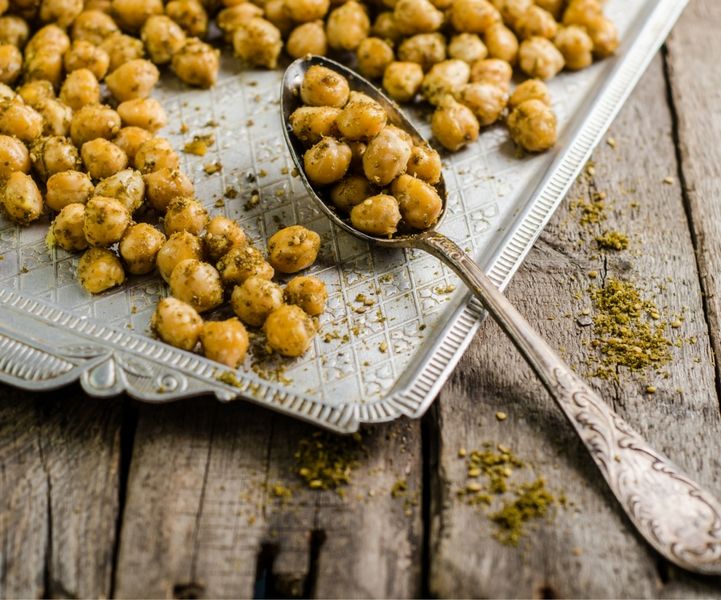
Spicy Roasted Chickpeas
Roasted chickpeas are packed with protein, nutrients, crunch, and flavor. They're easy to make at home.
Chickpeas
Olive oil
Za'atar, Middle Eastern spice blend or other spices
1. Preheat the oven to 450°F.
2. Toss the chickpeas and olive oil together in a large bowl until the chickpeas are lightly coated and then stir in the spices, salt, pepper, crushed red pepper and minced garlic. Mix.
3. Spread onto a baking sheet, and bake for about 20 minutes, stirring the pan halfway through.
Roasted Chestnuts
1. Preheat your oven to 350°F.
2. Carefully cut X's into the flat side of the chestnut with a knife.
3. Place the chestnuts in a single layer on a baking tray.
4. Bake for 15-25 minutes or until X opens.
Pistachios
These small nuts are a good source of protein, fiber, vitamins, and minerals. Look for pistachios roasted with Himalayan or sea salt, as well as unsalted. Choose nuts in the shell to keep portions under control.
Baby Carrots with Curry Dip
Mix full fat Greek yogurt with curry or spice of your choice. Dip baby carrots or other vegetables for a healthy snack that provides protein, calcium, fiber, and vitamins. The fat in the yogurt helps your body access the beta-carotene in the carrots.
Green Bean "Fries"
Place green beans in a large bowl. Add olive oil, salt, spices, a sprinkle of grated Parmesan cheese. Stir well.
Move to a baking sheet in one layer and bake at 400°F until they turn into chips.
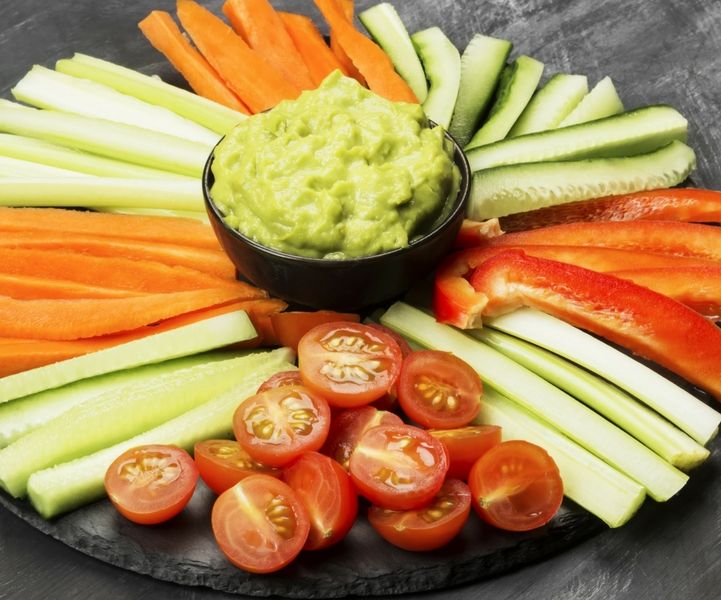
Crudites with Guacamole
Choose your favorite raw vegetables. Serve with guacamole or plain Greek yogurt mixed with your favorite spice. Avocado will provide healthy fats.
Peanuts
Although peanuts are legumes and not nuts, they contain a similar nutritional profile to their pricier counterparts, rich in vitamins, minerals, and mono- and polyunsaturated fats. Choose dry-roasted and shell your own to keep your hands busy and manage portions.
Frozen Blueberry Yogurt Bites
1 pint container blueberries
1 cup plain Greek yogurt
1 teaspoon stevia, optional
1. Stir together the yogurt and the stevia.
2. Gently fold in the blueberries to coat.
3. Scoop them up with a fork, and place them on a baking sheet so they don't touch.
4. Freeze for about an hour.
Parmesan Roasted Tomatoes
Beefsteak tomatoes
Parmesan
Spices
1. First, rinse the tomatoes and slice them into halves.
2. Toss gently with the olive oil and season with salt and pepper.
3. Arrange the tomatoes on a baking paper, and top them with grated Parmesan cheese.
4. Roast for about 15-20 minutes on 400°F on preheated oven, or until the Parmesan cheese melted and the top is slightly browned.
Sunflower Seeds
These nutritional powerhouses are a great source of vitamin E. Just a quarter cup provides over 60% of the recommended daily intake. The antioxidant decreases risk for cardiovascular disease and inflammation.
Phytosterols in sunflower seeds support healthy cholesterol, HDL. The seeds are also a great source of magnesium and selenium. Choose sunflower seeds with shells to avoid high-sodium flavorings.
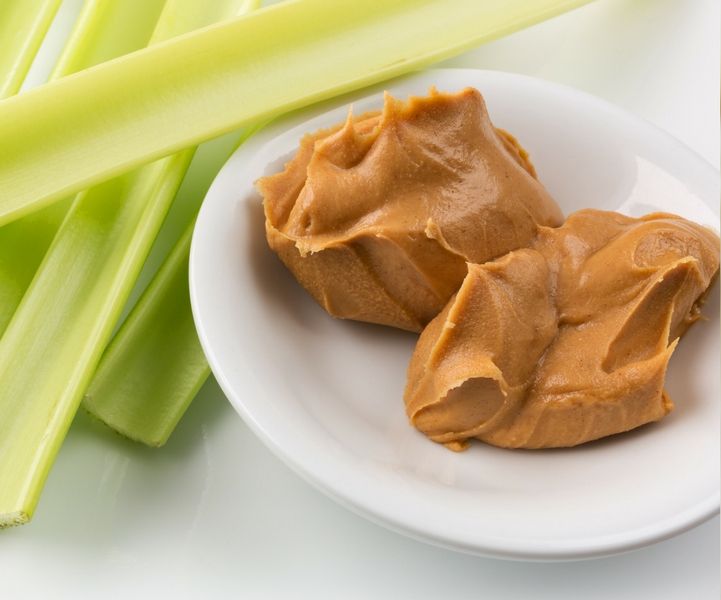
Celery Peanut Butter Sticks
To ensure your snacks provide numerous health benefits, combine two or more food groups, such as celery sticks with peanut butter. Celery is an excellent source of antioxidants and enzymes, as well as vitamins K, C and B6, potassium and folate.
Peanut butter is relatively high in calories but contains satisfying protein and fats. I In addition, peanut butter contains 3 mg of the powerful antioxidant vitamin E, magnesium to support bone health, potassium to support muscle, and vitamin B6.
Adding one serving of nuts or 2 tablespoons of peanut butter daily at least 5 days a week may reduce your risk for Type 2 diabetes as much as 30 percent.
Cottage Cheese
This classic "diet" food is a complete source of protein, meaning cottage cheese contains all of the amino acids. Higher in protein than milk. cottage cheese is also a good source of calcium and B vitamins.
Casein, the protein found in dairy, may promote fat loss and muscle maintenance, important when you're cutting calories.
Almonds
These tree nuts provide numerous health benefits, from healthy fats, fiber, and protein to magnesium and vitamin E. Including almonds in your diet may lower blood glucose levels, as well as blood pressure and LDL cholesterol. In addition, almonds may boost weight loss because they reduce hunger.
Home Baked Zucchini Chips
Zucchini is a good source of phytonutrients lutein and zeaxanthin, members of the carotenoid family that promote eye health. This summer squash is low in calories but contains vitamins and minerals and is a good source of vitamin C.
To prepare zucchini chips, thinly slice, toss in olive oil, Himalayan sea salt and pepper.
Bake in a 450°F oven for 30 minutes.
Asparagus Bacon Sticks
This green vegetable is a great source of vitamins and minerals such as A, C, E, K, and B6, as well as folate, iron, copper, and calcium. Asparagus contains both soluble and insoluble fiber, which are digested slowly and keep hunger at bay.
By pairing with bacon, you get the extra benefits of protein, B vitamins, 89% of the RDA for selenium, and 53% of the RDA for phosphorous, as well as minerals iron, magnesium, zinc, and potassium.
Bacon is a processed meat but occasionally using it as a complement may satisfy your cravings and keep you satisfied.
1. Wash and trim asparagus spears.
2. Cut bacon strips in half crosswise.
3. Wrap one-half strip bacon around each asparagus spear, leaving tip and end exposed.
4. Lay on a cookie sheet with sides.
5. Bake in a preheated 400°F oven for 20 to 25 minutes, or until bacon is cooked.

Healthy Snacks
Nuts: Although dense in calories, nuts provide numerous nutritional benefits when eaten in moderation. Almonds,, cashews, and pistachios are especially good choices. It’s important to be aware of serving size; a serving size of almonds is 23 nuts; for cashews, it’s 16-18 nuts and for pistachios, 49 nuts.
Instead of packaged nuts or those roasted in oil, choose raw or dry roasted nuts because roasted nuts may have been processed in omega-6 oils, which should be limited, and roasting at a high temperature may compromise nutrients.
Almonds, cashews, and pistachios provide a balanced mix of omega-3 fatty acids, protein, and fiber, as well as antioxidants, vitamins, and minerals.
Chickpeas: One of the earliest known legumes, chickpeas provide numerous health benefits. Also known as garbanzo beans, these legumes are packed with antioxidant compounds including polyphenols, phytonutrients, beta-carotene, and vitamins, which can reduce oxidative stress, potentially providing protection against cancer, cardiovascular disease, macular degeneration, and cognitive disorders.
The soluble and insoluble fiber in chickpeas can help with digestion, as well as regulating blood glucose levels. The high fiber content makes chickpeas ideal for dieters, as fiber partially inhibits the release of ghrelin, the hormone that sends hunger signals to your brain.
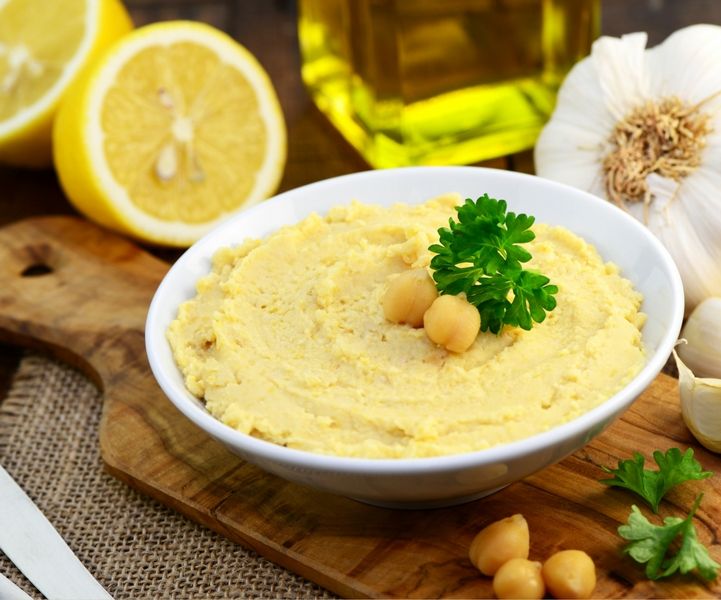
Hummus: This increasingly popular dip combines chickpeas with olive oil, lemon, and salt. Packaged hummus now comes in many variations. High in protein, hummus may help with cravings and to balance blood sugar. It’s easy to whip up homemade hummus by blending a can of chickpeas, a garlic clove, extra virgin olive oil, tahini (a condiment made from toasted hulled sesame seeds), lemon juice, and salt in the food processor.
As with other calorie-dense foods, it’s important to watch your portion size when you are trying to control or lose weight. Stick to 2 to 4 tablespoons. A cup of hummus can contain between 240-260 calories.
Mozzarella Cheese: This popular cheese is a good source of calcium with one ounce containing 183 mg of this important nutrient that not only supports healthy teeth and bones but also provides benefits for the cardiovascular system.
The phosphorous in mozzarella cheese allows the body to better absorb calcium. The mineral is crucial to support digestion and for kidney function. The mild cheese is rich in zinc, which is helpful to support weight loss. The protein in mozzarella cheese works to maintain muscle mass during weight loss.
Carrots with a Fat: Beta-carotene, which is converted by the body to vitamin A, gives carrots their orange hue. Vitamin A, along with vitamins E, D and K, are fat soluble, which means they do not dissolve in water and are better absorbed when eaten with some fat.
Studies show that a moderate amount of oil-based salad dressing or cheese allows the body to better absorb carotenoids, such as beta-carotene and lycopene from vegetables than a fat-free dressing.
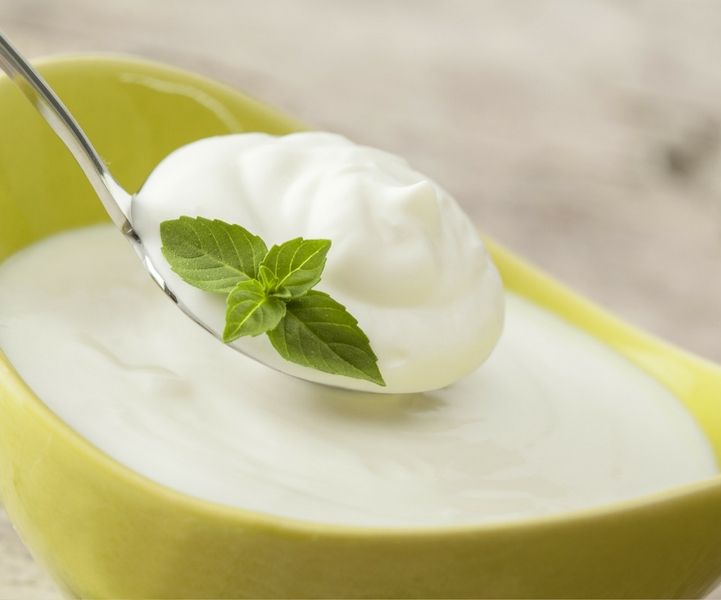
Yogurt: This popular dairy snack can either contribute benefits or wreak havoc on your diet, depending on which carton you spoon. Plain yogurt with active cultures can provide protein and healthy probiotics to support weight loss.
However, yogurts packed with sugar, refined or sugar substitutes, as well as artificial ingredients or toppings, are not as beneficial for your weight loss regimen.
Be sure to read the label; avoid flavored yogurt that may be filled with sugar, artificial sweeteners, colorants, and additives. When you’re choosing between nonfat, 2 percent or full-fat yogurt, all have benefits.
The fat in 2 percent or full-fat yogurt may be more satisfying but provides more saturated fat and calories that need to be balanced with other foods. If you prefer to add in a few walnuts or other source of fat, you may want to choose nonfat yogurt.
As with other snack foods on our list, it’s important to practice portion control. A serving size of plain Greek yogurt is about 3/4 cup or 6 ounces.
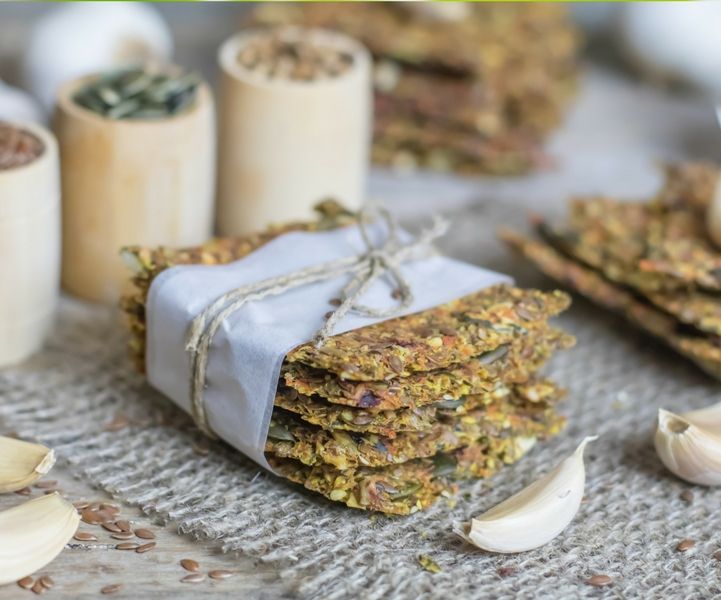
The Bottom Line
When it comes to snacking, what and how much you eat seems to be more important than whether you eat snacks. Choosing healthy snack is a better option than eating chips or other processed snack foods.
Snacks can be a good way to curb hunger and appetite so you aren’t ravenous at meal time and can also provide nutrients to your diet if you choose the right foods and practice portion control.
Read Next >>> 14 Therapeutic Whole Foods To Kick Start Your Health
-
http://fitgirlsdiary.com/2016/11/03/20-easy-healthy-snack-ideas-the-best-snacks-for-weight-loss/
-
https://www.everydayhealth.com/diet-nutrition/meal-planning/healthy-snacking-benefits.aspx
-
https://www.webmd.com/diet/guide/best-worst-snacks#1
-
https://www.ars.usda.gov/ARSUserFiles/80400530/pdf/DBrief/4_adult_snacking_0708.pdf
-
https://www.niddk.nih.gov/health-information/health-statistics/overweight-obesity
-
https://www.ars.usda.gov/ARSUserFiles/80400530/pdf/DBrief/4_adult_snacking_0708.pdf
-
http://www.todaysdietitian.com/newarchives/100713p44.shtml
-
https://www.healthline.com/nutrition/snacking-good-or-bad
-
https://www.prevention.com/food/smart-shopping/healthy-eating-why-peanut-butter-good-you








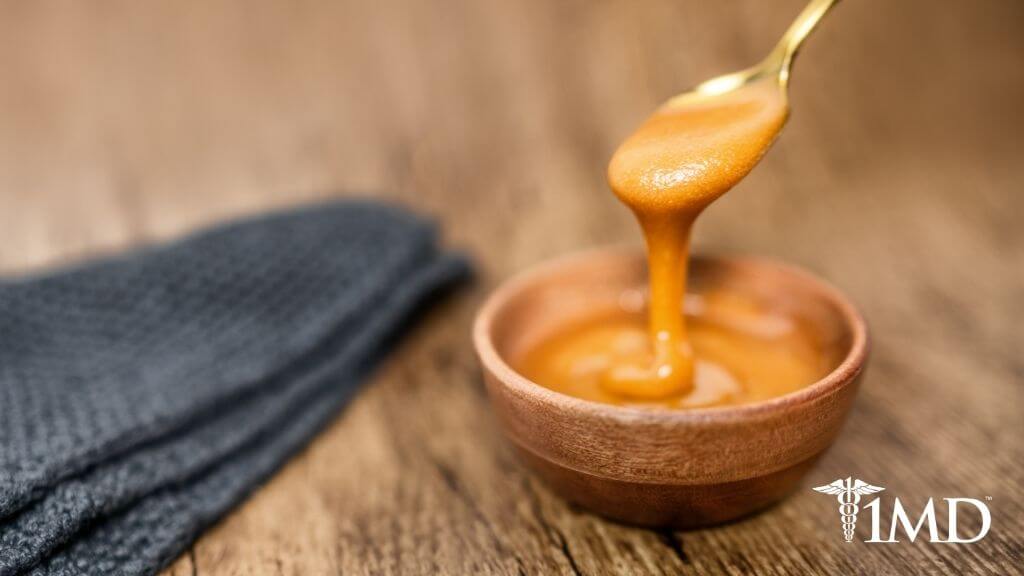
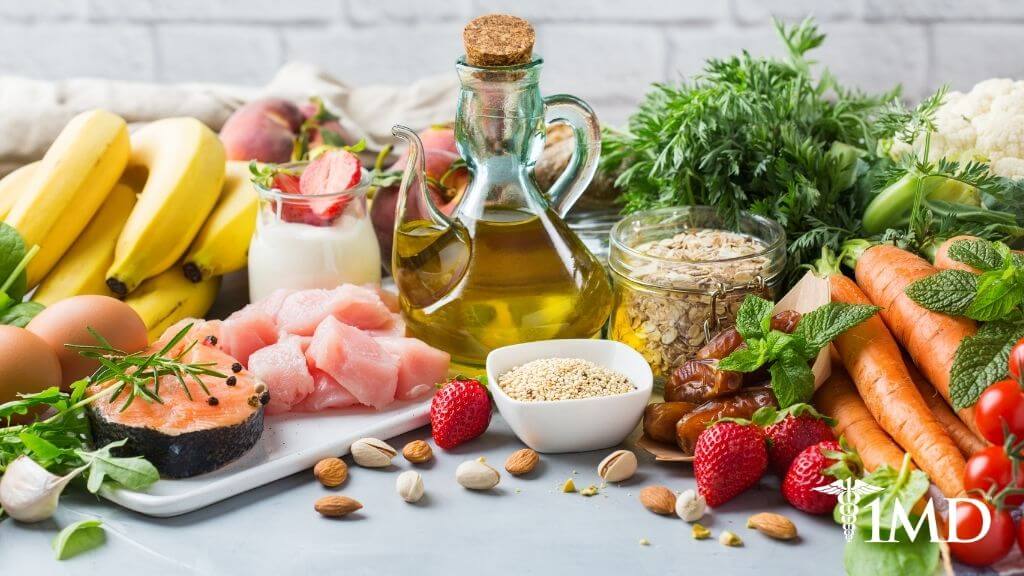
 Health Guides
Health Guides
 Latest Research
Latest Research


